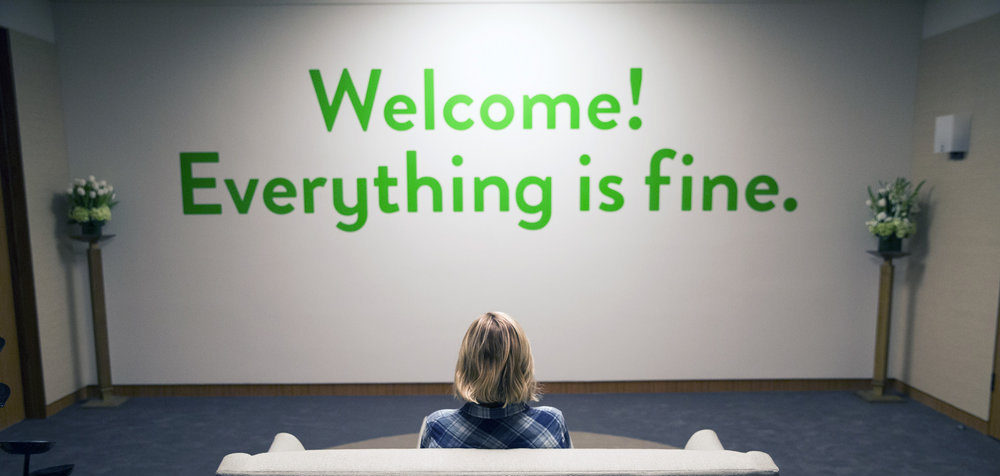The story of this class begins, in a way, with Regis Philbin.
Regis served as the bridge between the world of Notre Dame and the world of Michael Schur, creator of The Good Place. A bridge that allowed our letter, expressing our undying love and appreciation for the show and inviting Michael Schur to campus, to reach Schur’s hands. He agreed, and from that point til now our professors, Christine Becker, Ricky Herbst, and Meghan Sullivan, have been working tirelessly to make this the most thought- and resource-intensive 1 credit course in the history of Notre Dame (right down to spending hours trying to discern the font used in The Good Place… to no avail. — UPDATE: NDFTT alum Matt Mancini, who is part of the Good Place editing team, has checked in to report that the font is “Brandon Grotesque with a modified “Q” “g” “j” “p” “q” “y”. Thus, we call it “Brandon Good Place”.). Today, it was time for us students to see if this class truly is “The Good Class” as promised, or if we’ve been fooled into torturing each other all semester…
Class began with introductions, sharing our backgrounds and one interest or question we wanted to explore further from the show. Then, we talked about the rules for a pilot on network television, and how The Good Place is both typical and atypical of network TV. Typically, ideas for shows are pitched to networks over summer, and very few are made into a series. A pilot therefore must be able to do a whole bunch of things well in order to make the final cut. However, The Good Place was a straight to series order, which means NBC told Mike Schur:
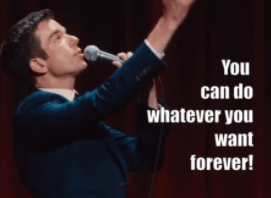
Therefore, The Good Place was not bound to the same rules most pilots are forced to comply to. This allows the writers to effectively lie to the audience from the very beginning and pull off the big plot twist of Season 1. We did, however, notice some key differences between the pilot script and the aired episode…
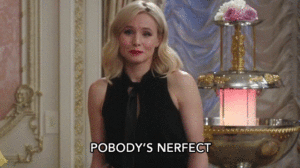
Originally, Eleanor’s parents were good people, who were “probably making out in heaven.” Changing them from good to bad, among other changes, made the Eleanor a more sympathetic character – her flaws became more understandable and relatable.
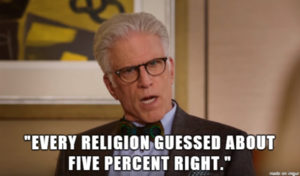
Secondly, Eleanor self-identified as Presbyterian in the original draft, which would have added an interesting dynamic to a show which studiously avoids bringing religion into its discussions of ethics and morality.
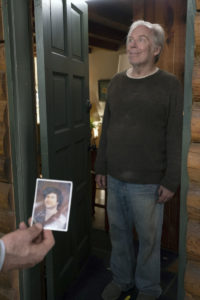
Lastly, the famous Doug Forcett initially forgot everything he had hallucinated about the good place, a detail which, had it been left in, would have fundamentally changed the course of season three.
We ended the day with a crash course on the 3 major moral theories which the show (and all of western philosophy) grapples with: Consequentialism, Deontology, and Virtue Ethics.
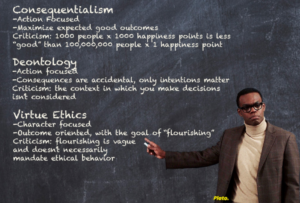 We also discussed how The Good Place sidesteps questions about the Christian heaven, hell, and the afterlife, so it can focus on questions pertaining to choices and actions here on Earth. And yes, this show really does get these theories right and challenges the audience to apply them to their everyday lives. Unlike The Big Bang Theory, which is a show about physicists that you won’t actually learn physics from, you might actually learn some philosophy from watching The Good Place. Whoever said you can’t learn anything from TV? They just weren’t watching the right shows!
We also discussed how The Good Place sidesteps questions about the Christian heaven, hell, and the afterlife, so it can focus on questions pertaining to choices and actions here on Earth. And yes, this show really does get these theories right and challenges the audience to apply them to their everyday lives. Unlike The Big Bang Theory, which is a show about physicists that you won’t actually learn physics from, you might actually learn some philosophy from watching The Good Place. Whoever said you can’t learn anything from TV? They just weren’t watching the right shows!
This was a great start to the good class. These bloggers rate this Chapter:
Coolness: 8/13
Dopeness: gold star
Dancing Ability: TBD
Freshness: Two thumbs up
Smart-brained: A+
